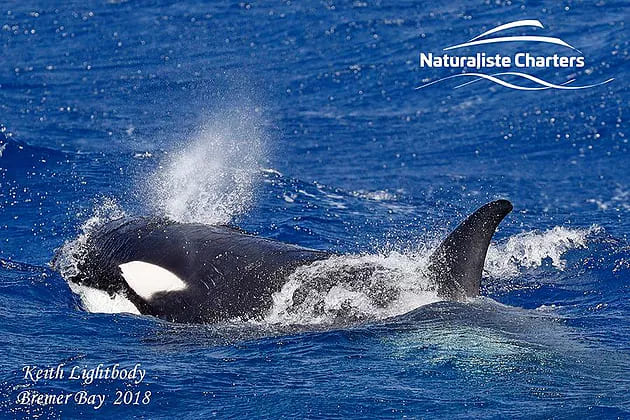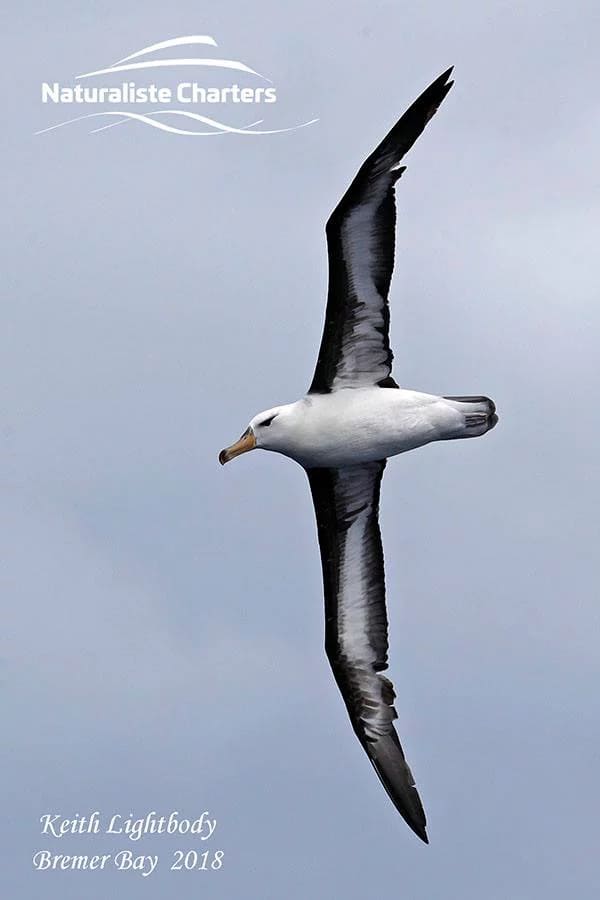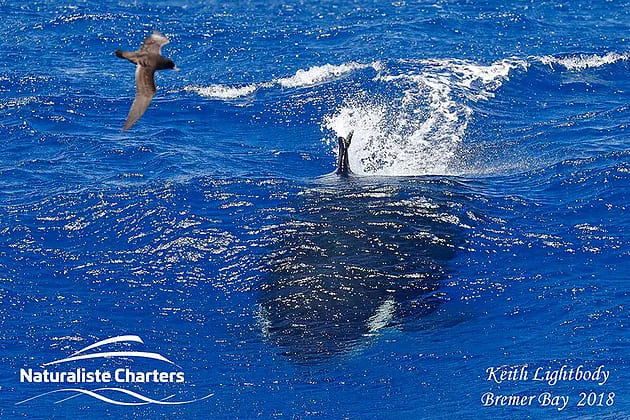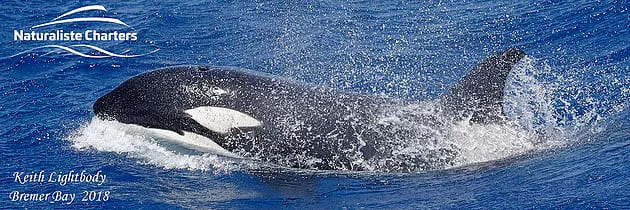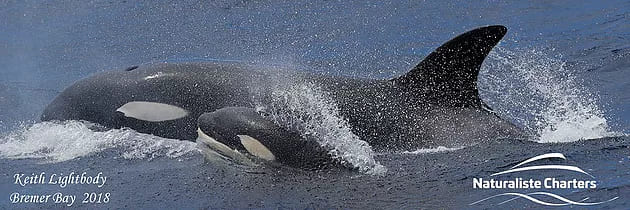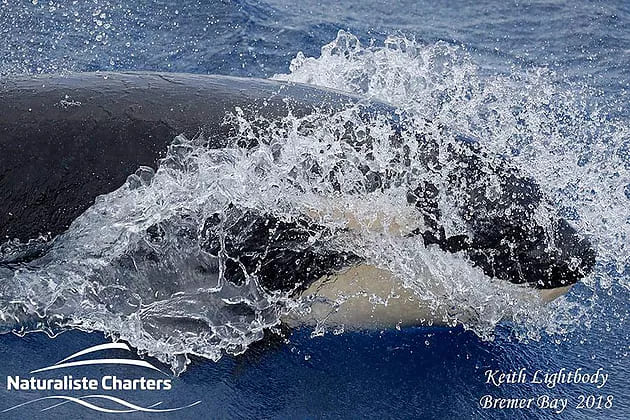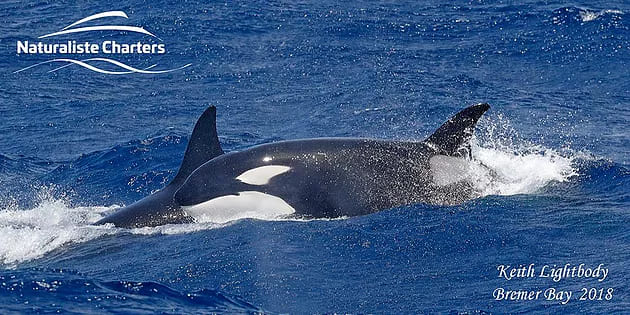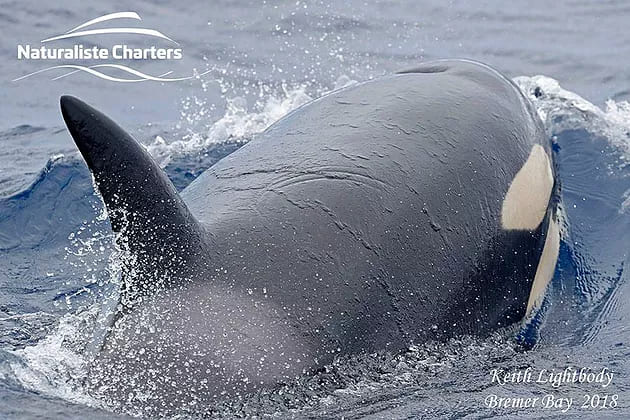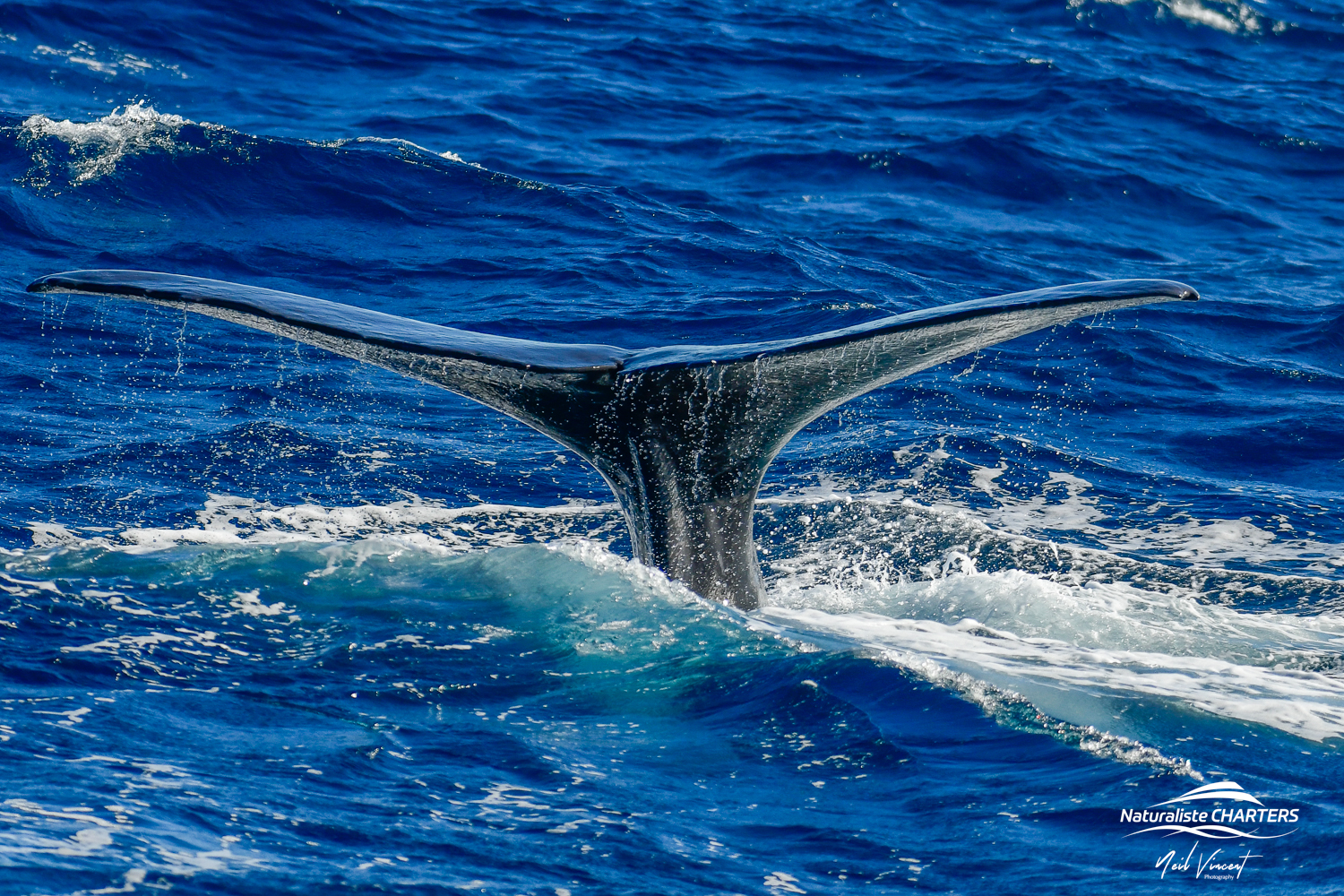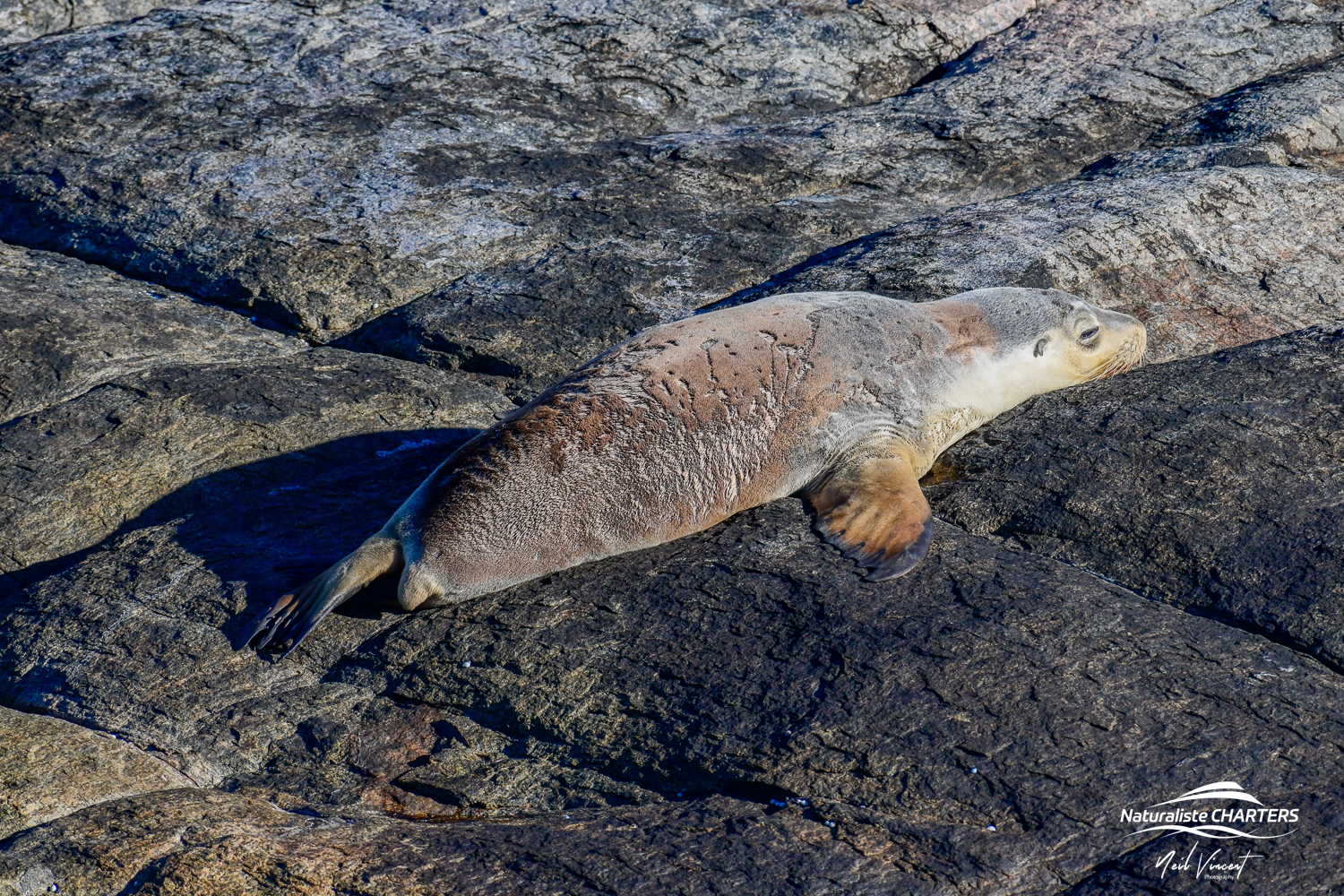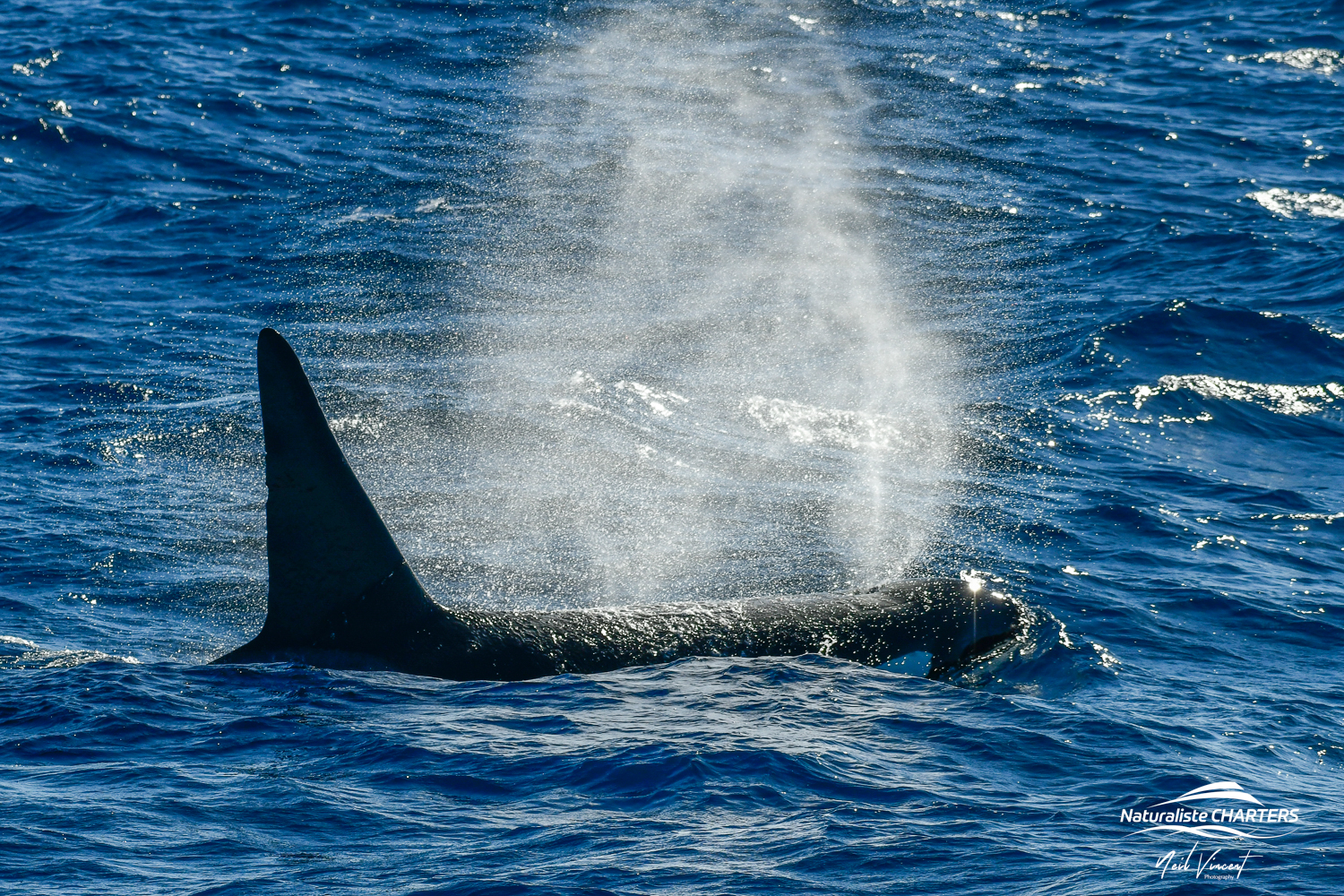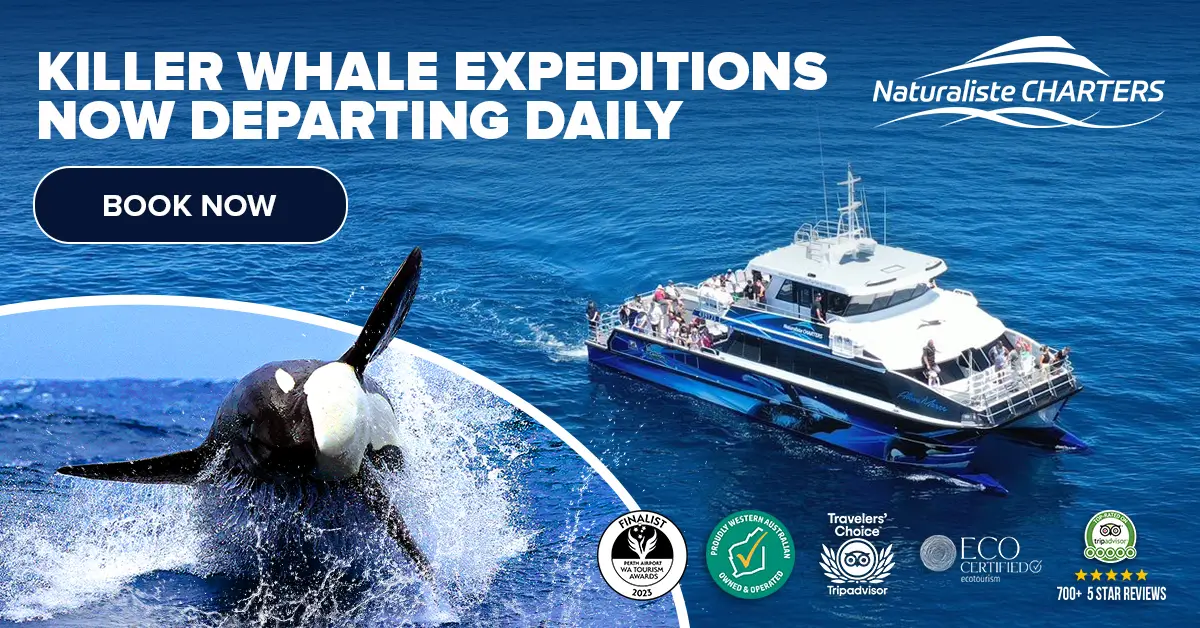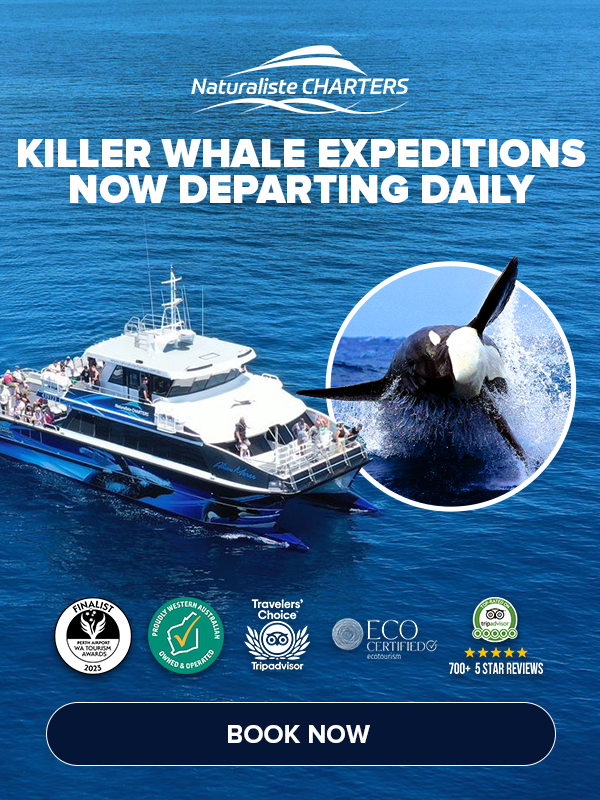It was a swell day out in the canyon today, so the killer whales weren’t hard to find. As we dropped off the shelf we noticed oil slicks straight away and so began heading toward them. Killer whales are often more active on the surface and easier to find on choppy days with decent amounts of swell. Once spotted, we soon realised that it was Split Tip’s pod as she surfaced proud along the Port side. The pod then began swimming beneath the boat from side to side and calls were alerted for Port side then Starboard side and so on as they zig zagged beneath us. We watched as they manoeuvred around the boat and became familiar with it as well as the passengers and crew onboard.
After a few minutes we thought that we’d lost sight of them before Spit Tip surfaced right in front of the boat less than 20 metres away and surprised us. Its not uncommon for the orca to surface in unpredicted locations as they can hold their breath for over 15 minutes and reach speeds of up to 50km/hr with cruising speeds of 5-6km an hour! So its no surprise that they can pop up the the most unexpected locations. Split Tip herself is quite a curious and fairly inquisitive character and has often delighted us by interacting and coming very close to the boat as she did today.
Later our attention was drawn further westwards with blows seen 800 meters in the distance. We crept closer and noticed another oil slick, this time with a number of flesh footed shearwaters following over head. The orca took a dive. Curious to know what they went down for we waited and watched for any surfacing blows. While scanning the horizon on the bow we heard calls from the back deck and a Bronze Whaler shark had been sighted at the surface, possibly attracted by the oil spreading from a recent kill. Bronze Whaler sharks are among the many sharks seen in the Bremer Canyon are often attracted to the surface from the release of blood and oil into the water from the kills of the killer whales.As always in the Canyon you never know where the best place is to park yourself as animals can be seen from all corners of the vessel and although we missed the shark at the rear deck the bow was suddenly surprised by the large splash of an orca tail slap! The pod began tail slapping all together as a group stirring up the water with 4, 5, 6 slaps all one after the other. Unfortunately due to distance we were unable to determine exactly why they were tail slapping all together but generally, tail slapping is used as a social behaviour, to deter sharks and in pursuit of prey.Before calling it a day we encountered two Mobula rays, making their way through the surface waters of the canyon. Mobula rays are known for their incredible leaps out of water reaching heights of over 2 meters before crashing down to a loud belly flop. Scientists are unsure of the exact reason behind this behaviour but suspect that it could be used to attract a mate. Another amazing encounter to top off another amazing day on the southern ocean.
Until tomorrow
The Bremer Canyon Crew

